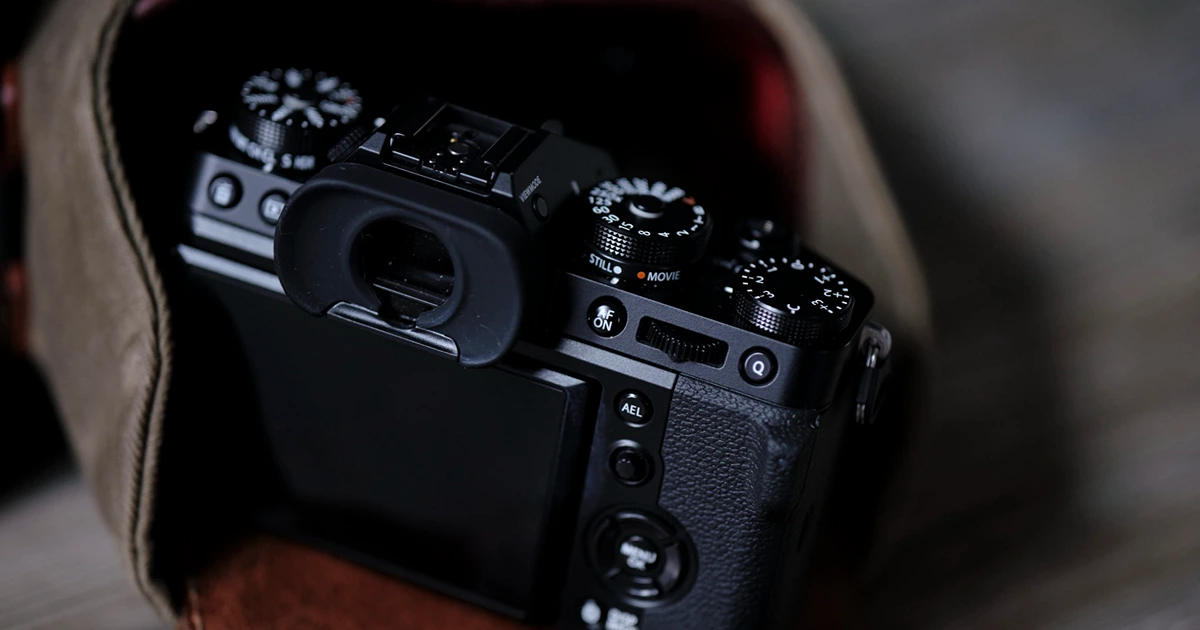If you’re ready to move beyond smartphone photography and take more control over your images, a mirrorless camera is the best place to start. These cameras offer outstanding image quality, fast performance, and more creative flexibility in a compact, travel-friendly design.
Mirrorless models have largely replaced DSLRs due to their more compact size and streamlined internal design, which makes them easier to carry and faster to use. Among the many options available, our top recommendation is the Fujifilm X-T5. It offers an impressive combination of image quality, intuitive handling, and durable construction, making it a great choice for both enthusiasts and serious hobbyists.
With its sharp 40MP sensor, impressive autofocus, and classic retro styling, the X-T5 is a camera you’ll want to bring everywhere, and it consistently delivers beautiful results no matter the setting.
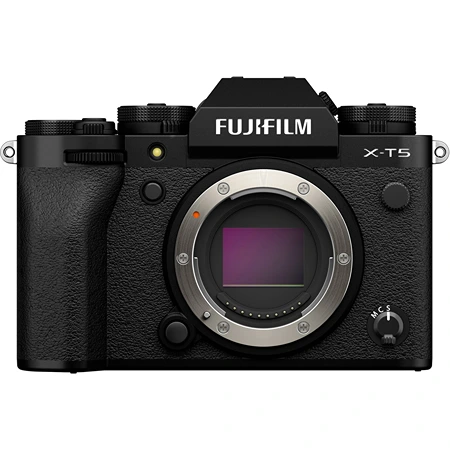
Fujifilm X-T5
Best Overall Option
With its classic design and weather-sealed body, this APS-C mirrorless camera delivers exceptional low-light performance, sharp autofocus, smooth video, and highly customizable controls.
Buy on AmazonThe Fujifilm X-T5 blends vintage charm with modern performance, offering a powerful mirrorless experience in a compact, classic-looking body. Its design is filled with tactile dials and customizable controls that appeal to photographers who prefer a hands-on shooting experience. Underneath the retro exterior lies a highly capable imaging system, with advanced technology that makes it well suited for everything from casual photography to demanding creative projects.
At the heart of the X-T5 is a 40-megapixel sensor, the highest resolution in its class. It delivers stunning image quality with plenty of room to crop or print at large sizes without sacrificing detail. Even cropped shots retain impressive clarity, and full-size images can be printed at dimensions up to 32 by 21 inches at 240 dpi, bigger than what many home photo printers can handle. This makes the X-T5 a great option for those who want professional-grade results from a portable system.
Fujifilm’s popular film-simulation modes are built into the X-T5 and provide beautiful color profiles that mimic the company’s classic film stock. These presets give JPEGs a film-like aesthetic straight out of the camera, making post-processing optional rather than essential. Enthusiasts can also load additional “recipes” to the custom shooting menu for more personalized looks. Combined with the camera’s robust JPEG engine, these features make the X-T5 particularly enjoyable for those who want great results without always shooting in RAW.
The control layout is another highlight. Physical dials on the top plate offer instant access to shutter speed, ISO, and exposure compensation, while aperture is controlled via a ring on most Fujifilm lenses. These controls are responsive and intuitive, allowing photographers to change key settings without diving into digital menus. A joystick makes it easy to move the autofocus point, and the high-resolution electronic viewfinder helps with precise manual focusing.
Subscribe to Product Bible
Stay updated with the latest product reviews, buying guides, and expert recommendations. Fresh advice on the best things we've researched, tested, and reviewed, sent to your inbox weekly.
Want to know more about how we handle your data or opt out of marketing emails? Check out our Privacy Policy. If you have any questions, we're always here to help.
The rear touchscreen tilts in multiple directions, making it useful for shooting at awkward angles or in portrait orientation. However, it doesn’t fully articulate to the side, which limits its usefulness for vlogging or selfies. That said, users can still control the camera remotely and monitor their framing using Fujifilm’s smartphone app. The app also supports wireless image transfer, remote shutter release, and firmware updates, all through a straightforward interface.
Image stabilization is another strength. The X-T5’s in-body stabilization compensates for up to seven stops of shake, helping you capture sharp images even at slower shutter speeds. This feature is especially useful when shooting handheld in low light or at telephoto focal lengths. It outperforms many competitors in this area, including its predecessor and other similarly priced models.
Battery life is solid, rated for 580 shots per charge. In regular use, that’s often enough for a full day of shooting, though power users or those shooting in boost mode may want to carry a spare. The camera charges via USB-C, which means you can top it off with a portable power bank if needed. This convenience, along with its overall durability and weather sealing, makes the X-T5 a reliable companion for both everyday use and more adventurous outings.
Video performance is also excellent. The X-T5 can record in 6.2K resolution internally at 10-bit 4:2:2 and supports external recording in ProRes RAW or Blackmagic RAW via HDMI. Footage looks detailed and vibrant, and the in-body stabilization helps smooth out handheld clips. While it lacks a fully articulating screen, the camera’s overall video quality, especially in low light, makes it a capable choice for content creators who prioritize visual performance over vlog-centric features.
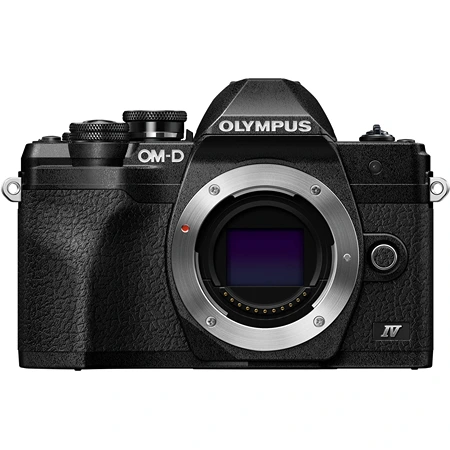
Olympus OM-D E-M10 Mark IV
Best Budget Option
Compact yet powerful, this mirrorless option offers a vast lens ecosystem, in-body stabilization, fast autofocus, and reliable exposure for consistently great shots anywhere.
Buy on AmazonThe Olympus OM-D E-M10 Mark IV is one of the best mirrorless cameras available for budget-conscious photographers who still want access to advanced features. It delivers impressive image quality, fast performance, and reliable stabilization, all in a compact and lightweight body that’s easy to carry. For anyone looking to move beyond smartphone photography or step up from a basic point-and-shoot, this camera offers excellent value without cutting corners where it counts.
Despite its approachable price, the E-M10 Mark IV is packed with useful features. It includes a high-resolution electronic viewfinder, a responsive tilting touchscreen, and a fast autofocus system that performs well in most lighting conditions. With a UHS-II SD card, it can shoot at 5 frames per second until the card fills, making it suitable for capturing bursts of action or fleeting moments. Its in-body image stabilization works with any compatible lens, providing sharper images even in low-light or handheld situations.
The camera’s 20-megapixel Micro Four Thirds sensor delivers vibrant images with plenty of detail. While it doesn’t quite match the dynamic range and low-light performance of larger-sensor models, the difference is small enough that most users will rarely notice. In typical lighting conditions, the E-M10 IV holds its own against more expensive competitors, although it does show a bit more image noise when using higher ISO settings.
Lens compatibility is a major advantage of the Olympus system. The E-M10 Mark IV supports the full range of Micro Four Thirds lenses, with over 100 native options from Olympus, Panasonic, and third-party brands. From ultra-wide fisheyes to long telephoto zooms, there’s a lens for nearly any scenario. You can also adapt vintage manual lenses easily using low-cost mechanical adapters, which expands creative flexibility and makes this camera an appealing platform for experimentation.
The body design offers strong ergonomics. It features a prominent grip that feels secure even when paired with longer lenses. Dual control dials provide quick access to exposure settings, and customizable buttons let users fine-tune the camera to their preferences. The touchscreen can be used for quick focus adjustments or as a virtual control panel for commonly changed settings. While the menu system is more complex than ideal, it reflects the broad range of features available to customize.
Image stabilization is particularly effective on this model. The sensor-shift system helps minimize blur from camera shake, even when using longer focal lengths or slower shutter speeds. In real-world use, the E-M10 IV can deliver sharp handheld shots at shutter speeds as slow as 1/3 second with a 50mm lens, something most cameras without stabilization would struggle to achieve. This feature alone makes a noticeable difference in everyday photography, especially in low light or when traveling without a tripod.
The camera also offers solid wireless connectivity through the Olympus Image Share app. With it, users can control the camera remotely, adjust settings, and transfer photos to a smartphone. The app supports advanced functions like changing shooting modes, setting focus points, and triggering the shutter all without touching the camera. It’s one of the more capable mobile apps among mirrorless brands, offering more flexibility than many competitors in this price class.
While the E-M10 IV is a well-rounded performer, it’s not perfect. Battery life is rated at just 360 shots per charge, which is lower than that of many rivals, so carrying a spare battery is recommended. Autofocus tracking is also less reliable when capturing moving subjects, and the burst rate with continuous autofocus is limited to 5 frames per second. These shortcomings mean the E-M10 IV isn’t the best fit for fast-paced sports photography, but for everyday use, travel, and learning the fundamentals of photography, it’s a superb choice.
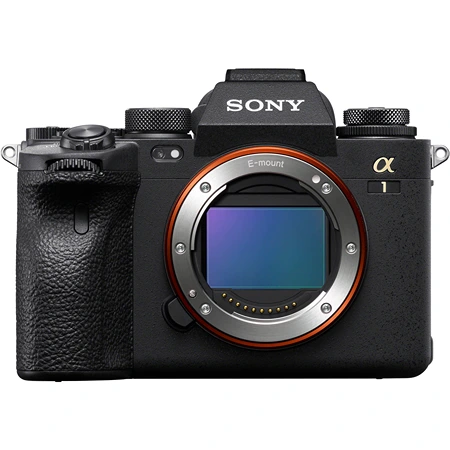
Sony Alpha 1
Best Upgrade Option
Designed for professionals, this flagship model delivers unmatched performance with a 50MP sensor, 30 fps burst shooting, 8K video, and industry-leading autofocus.
Buy on AmazonThe Sony α1 is Sony’s flagship mirrorless camera and a true powerhouse for professionals who need the highest performance across photography and video. Designed to combine high resolution, high speed, and professional-grade video, it stands apart from every other model in Sony’s Alpha lineup. While its $6,500 price tag puts it in rarefied territory, its capabilities justify the investment for those who demand the absolute best.
At its core, the α1 features a 50.1-megapixel full-frame sensor capable of capturing detailed stills at up to 30 frames per second with no viewfinder blackout. That level of continuous shooting speed, paired with this resolution, is virtually unmatched and opens the door to freezing fast action while retaining print-worthy detail. Thanks to its stacked CMOS sensor and advanced processing pipeline, the α1 delivers exceptional dynamic range and low-light performance, with clean files even at high ISO settings.
The video specs are equally impressive. The camera can record 8K video internally at 30 fps and 4K at up to 120 fps, using the full sensor width with minimal rolling shutter. Oversampling ensures sharpness, and 10-bit 4:2:2 internal recording offers ample flexibility in post-production. While 8K footage can be demanding on older machines, the α1 captures it reliably and without the overheating issues that affect some competitors.
Autofocus performance is best-in-class. The α1 uses real-time tracking with AI-powered subject recognition, allowing it to lock on to human and animal eyes with incredible accuracy. Even in busy scenes or with erratic movement, the camera maintains precise focus. For sports, wildlife, or high-pressure events, this level of autofocus reliability is a major advantage. The system’s responsiveness extends across Sony’s lens ecosystem, and the camera’s blackout-free EVF ensures you don’t miss a moment.
Physically, the α1 improves upon previous Sony designs with a more comfortable grip, robust weather sealing, and a higher-resolution 9.44-million-dot electronic viewfinder. The body layout is familiar to users of Sony’s Alpha line, but it includes refinements like a more secure lens mount and a responsive touchscreen. The screen tilts but doesn’t fully articulate, which may be a limitation for some video shooters, though it remains highly usable for most scenarios.
Battery life is excellent for a high-performance mirrorless body. Despite its power-hungry sensor and processing demands, the α1 can shoot over 500 stills per charge in typical use and performs better than expected during long bursts. Video shooting does draw more power, but the system remains efficient given the processing workload required for 8K and high-frame-rate footage.
Storage flexibility is also well-considered. Dual card slots support both SD UHS-II and CFexpress Type A cards, offering multiple workflows depending on whether speed or capacity is prioritized. This allows professionals to shoot RAW and JPEG to separate cards, use relay recording, or record backup copies in real time, which is essential for high-stakes assignments.
In nearly every respect, the Sony α1 is a category-defining camera. Its blend of speed, resolution, video capabilities, and autofocus technology puts it ahead of competitors in nearly every measurable way. For working professionals in need of a single camera that can do it all, portraits, sports, weddings, cinema, and more, the α1 is an unmatched tool built to deliver. Though its price reflects its ambitions, so does its performance. For those who need the best, this is it.
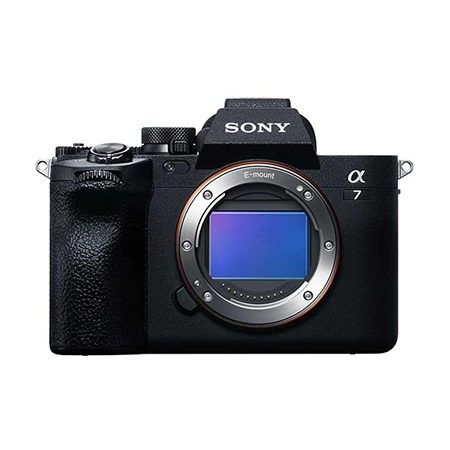
Sony α7 IV
Best Full-Frame Option
If you prefer a full-frame camera, the Sony α7 IV delivers outstanding image quality, advanced autofocus, a tilting touchscreen, and dual card slots.
Buy on AmazonThe Sony ɑ7 IV is the best full-frame mirrorless camera for most people who want professional-grade image quality and performance. While most photographers don’t need a full-frame sensor, those who shoot in challenging lighting conditions or want maximum detail for large prints will appreciate what this camera delivers. With its excellent resolution, cutting-edge autofocus, and deep customization, it stands out as a top-tier option for serious enthusiasts and hybrid shooters.
The ɑ7 IV’s 33-megapixel sensor provides outstanding image quality with a balance of resolution, low-light capability, and dynamic range. It captures rich detail and produces clean, usable images even at high ISO settings where other full-frame cameras struggle. Compared with crop-sensor cameras, the full-frame sensor gives it an edge in image quality, particularly in dim environments. Photos maintain their sharpness and clarity across a wide range of conditions, making the ɑ7 IV ideal for both stills and video.
Physical controls on the ɑ7 IV are extensive and thoughtfully arranged. It includes a joystick for selecting focus points, three customizable dials, a dedicated function button for quick menu access, and five fully programmable buttons. These controls give photographers fast access to key settings and allow for deep personalization based on shooting preferences. While other cameras offer similar hardware, the variety of functions assignable to each control makes Sony’s implementation especially effective.
The fully articulating touchscreen flips out and rotates in multiple directions, which makes it useful for vlogging, selfies, and high- or low-angle shots. The screen supports touch-to-focus and touch-to-shoot functionality, and can also act as a trackpad for selecting focus points while using the electronic viewfinder. These features improve workflow and allow greater creative flexibility, whether you’re shooting handheld, on a tripod, or recording video.
Subscribe to Product Bible
Stay updated with the latest product reviews, buying guides, and expert recommendations. Fresh advice on the best things we've researched, tested, and reviewed, sent to your inbox weekly.
Want to know more about how we handle your data or opt out of marketing emails? Check out our Privacy Policy. If you have any questions, we're always here to help.
Battery life is another strong point. The ɑ7 IV can capture up to 520 shots per charge, which is impressive for a full-frame mirrorless camera. While carrying a spare battery is still wise for long outings, this level of endurance should be enough for most everyday shoots. The camera also supports USB-C charging, which adds convenience when traveling or shooting on location.
Dual card slots add a layer of reliability and flexibility. The ɑ7 IV can back up each shot to a second card in real time, which is especially important for critical work like events or client shoots. You can also configure the slots to split file types, saving video on one card and stills on another, or writing RAW files to one and JPEGs to the other. This kind of versatility makes the camera more adaptable to professional workflows.
Autofocus performance on the ɑ7 IV is among the best in its class. Sony’s AI-driven system tracks eyes, faces, animals, and birds with remarkable accuracy. The autofocus system holds focus even as subjects move unpredictably through the frame, and it adapts well to changing scenes. In burst mode, it captures up to 10 frames per second, which is more than enough for most action shots. Even when shooting RAW files on an SD card, where burst speeds may dip slightly, the camera still performs fast enough for all but the most demanding sports scenarios.
Video quality is excellent. The ɑ7 IV records oversampled 4K video at up to 60 frames per second using the full sensor width, resulting in sharp, detailed footage. It also offers 120 fps in Full HD for smooth slow-motion playback. With advanced codecs, 10-bit color depth, and a wide dynamic range, the video output is suitable for both casual creators and professional editors. Whether shooting weddings, interviews, or cinematic B-roll, the ɑ7 IV delivers footage that looks clean, vibrant, and highly editable.
Whether you’re new to photography or upgrading from an older system, choosing the right mirrorless camera comes down to what you value most: portability, image quality, speed, video capabilities, or long-term flexibility. Mirrorless systems today are incredibly versatile, offering tools that can handle everything from casual snapshots to professional work across genres like portraiture, sports, and video production.
What matters most is finding a camera that encourages you to shoot more. With features like fast autofocus, reliable stabilization, intuitive controls, and a wide selection of lenses, today’s mirrorless cameras help you focus on capturing the moments that matter. No matter your skill level or creative goals, there is a mirrorless camera that fits your needs and inspires you to keep creating.
